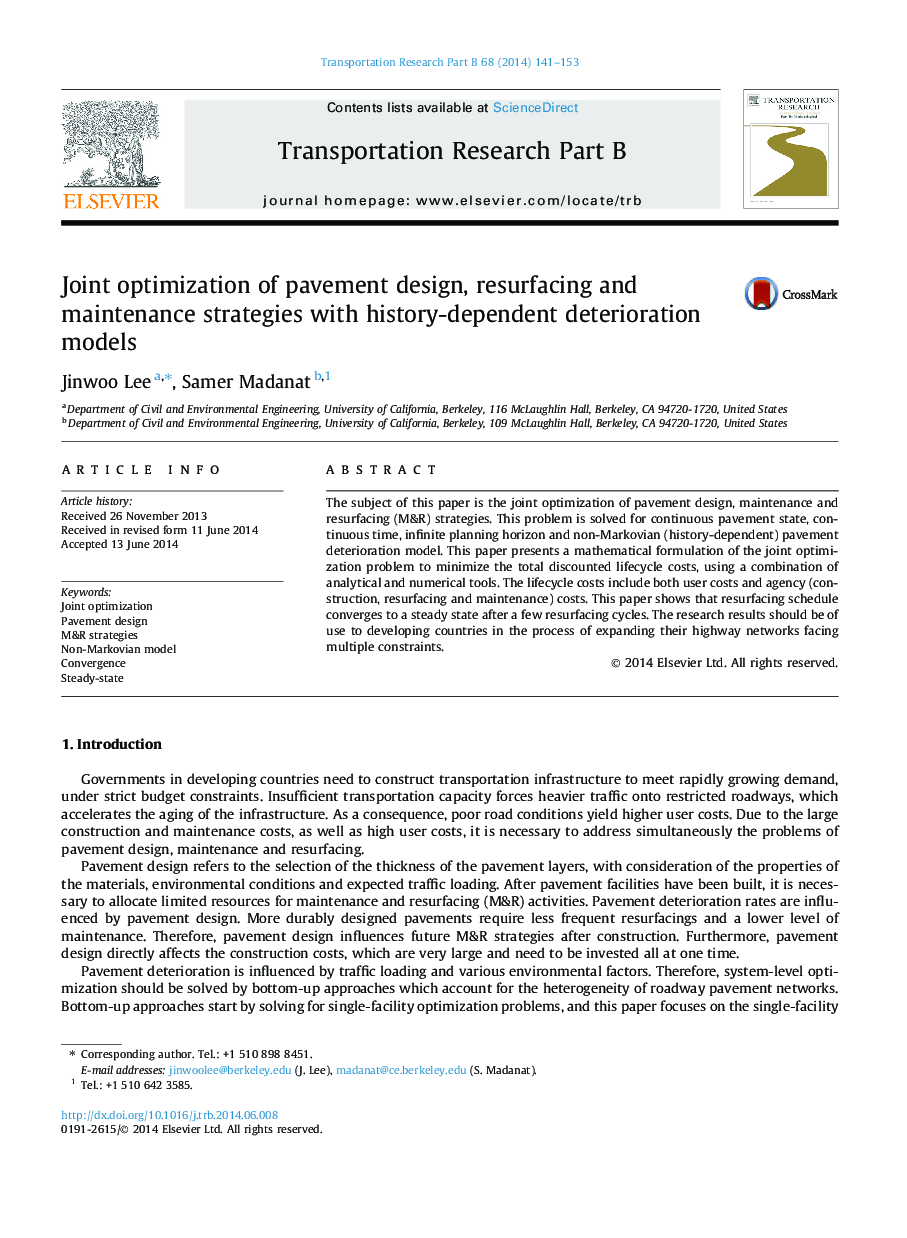| Article ID | Journal | Published Year | Pages | File Type |
|---|---|---|---|---|
| 1131997 | Transportation Research Part B: Methodological | 2014 | 13 Pages |
•Joint optimization of pavement design and management is proposed.•We examine how pavement design influences management strategies.•We use a non-Markovian model to consider the effects of history on deterioration.•Resurfacing planning converges to steady state, even with non-Markovian model.•Results show that proper pavement design can minimize pavement lifecycle costs.
The subject of this paper is the joint optimization of pavement design, maintenance and resurfacing (M&R) strategies. This problem is solved for continuous pavement state, continuous time, infinite planning horizon and non-Markovian (history-dependent) pavement deterioration model. This paper presents a mathematical formulation of the joint optimization problem to minimize the total discounted lifecycle costs, using a combination of analytical and numerical tools. The lifecycle costs include both user costs and agency (construction, resurfacing and maintenance) costs. This paper shows that resurfacing schedule converges to a steady state after a few resurfacing cycles. The research results should be of use to developing countries in the process of expanding their highway networks facing multiple constraints.
